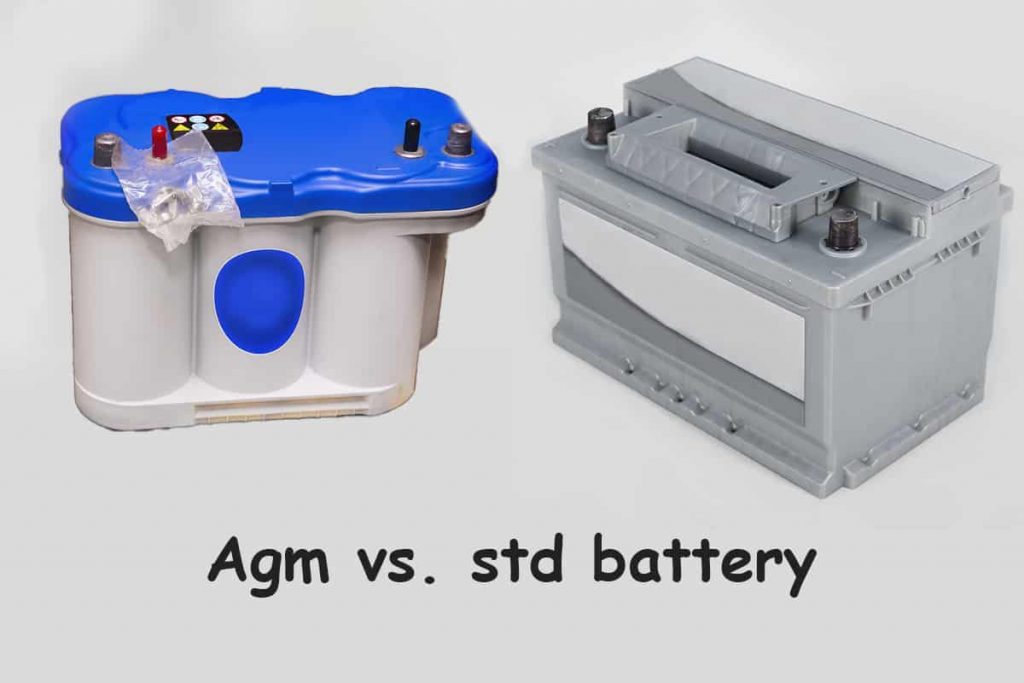Choosing between AGM (Absorbed Glass Mat) batteries and standard flooded lead-acid batteries requires understanding their fundamental differences, performance characteristics, and best use cases. AGM technology represents an evolution in battery design that addresses many limitations of traditional batteries, while standard flooded batteries continue to offer reliable performance at a lower cost point. This comprehensive guide examines both technologies in detail, providing evidence-based comparisons to help you make an informed decision based on your specific power requirements, budget constraints, and operational conditions.
What is a Standard Battery?
Standard flooded lead-acid batteries are the traditional choice for energy storage. These batteries use liquid electrolytes to generate power, requiring regular maintenance like topping off with distilled water. While they are cost-effective upfront, they come with limitations such as higher self-discharge rates and susceptibility to spills and leaks.
Standard batteries are often used in automotive applications, renewable energy systems, and backup power setups. Their affordability makes them attractive for budget-conscious users, but their shorter lifespan (typically 2–4 years) and maintenance requirements can be drawbacks over time.
For more details on flooded lead-acid batteries, check out our guide on Flooded Lead Acid vs LiFePO4 Batteries.
What is an AGM Battery?
AGM batteries represent a modern evolution of lead-acid technology. Instead of liquid electrolytes, AGMs use a fiberglass mat to absorb the electrolyte, making them spill-proof and maintenance-free. This sealed design eliminates the need for regular maintenance and allows for flexible installation in various orientations.
AGM batteries excel in durability, vibration resistance, and faster charging times compared to standard batteries. They also offer a longer lifespan—up to 8–10 years under optimal conditions—and perform well in extreme temperatures. These features make AGMs ideal for demanding applications like off-road vehicles, marine setups, and backup power systems.
Learn more about AGM technology in our Stop-Start Batteries Guide.
Key Differences Between AGM and Standard Batteries

The choice between AGM and standard batteries often boils down to your priorities: cost, performance, or maintenance. Here’s how they stack up:
| Feature | AGM Battery | Standard Battery |
|---|---|---|
| Maintenance | Maintenance-free | Requires regular upkeep |
| Lifespan | Longer (8–10 years) | Shorter (2–4 years) |
| Safety | Spill-proof design | Risk of leaks or spills |
| Cost | Higher upfront cost | More affordable initially |
| Charging Speed | Faster | Slower |
| Temperature Tolerance | Better resistance to extremes | Sensitive to heat/cold |
For a deeper dive into battery performance metrics, visit our Battery Reserve Capacity Guide.
Which Battery is Right for You?
- Automotive Applications: If you need quick bursts of power for starting engines or handling vibrations from rough terrain, AGM batteries are the better choice.
- Budget-Friendly Solutions: For those prioritizing affordability over advanced features, standard flooded lead-acid batteries may suffice.
- Extreme Conditions: AGM batteries outperform standard options in both hot and cold environments due to their sealed design.
- Long-Term Investment: While AGMs have a higher upfront cost, their longer lifespan and lower maintenance requirements make them more cost-effective over time.
If you’re considering upgrading your battery system entirely, explore our Custom Lithium Battery Packs for unmatched safety and efficiency.
Conclusion: AGM or Standard?
The ideal battery choice depends primarily on your specific application, budget considerations, and performance requirements. Based on the technical specifications and performance characteristics:
AGM batteries are the superior option for applications requiring maintenance-free operation, extended lifespan, and enhanced reliability in demanding conditions. They represent better long-term value despite higher initial costs, particularly for critical systems where failure isn’t an option.
Standard flooded lead-acid batteries remain practical for basic applications with regular maintenance accessibility, moderate performance needs, and tighter budget constraints. They continue to provide reliable service when properly maintained.
For applications with unique power requirements, consider consulting with battery industry standards like IEEE 1881 or reviewing independent testing data from organizations such as Battery Council International to further guide your decision.


